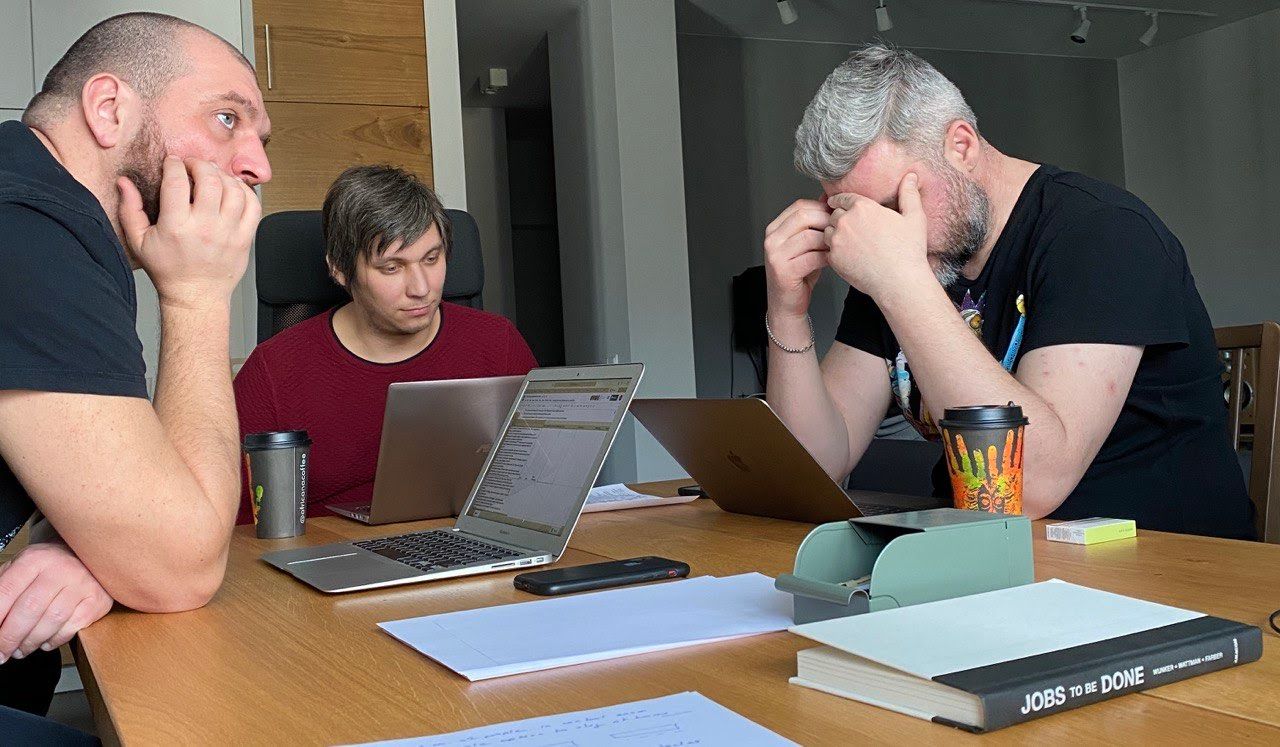Video Transport: the jobs it is hired to do

Last year has brought a lot of change to the space of video production. Having essentially lost the freedom to travel, companies adopted remote production methods for all kinds of content: from corporate events to entertainment shows for major broadcast and cable networks. At the same time, tremendous amounts of new on-demand and live content has created intense competition for traditional broadcasters, who constantly seek new ways to cut costs and be more productive.
We sat down with the team recently to study the exact ways Video Transport is being deployed and for what particular reasons. We used a customer development framework described in Jobs to Be Done, a book by Stephen Wunker. A “job” is simply something the customer wants done, and he might have a few criteria to evaluate whether it was done well or not. He usually also has reasons to do this job, as well as some kind of context. As product designers, it is important for us to know and understand all of these things.
We discussed the notes we’d made while speaking to customers and grouped them together. We came to the conclusion that there are just two main reasons (or goals) that customers use our product for:
- To work around the restrictions of either space or distance, usually imposed by the pandemic. In other words, to minimize travel or limit the number of people in a room.
- Simply, to bring costs down.
We also identified five functional jobs that our product performs when hired to achieve one or both of these two goals.
Remote contribution
In this use case, the function of Video Transport is to deliver video feeds from remote contributors to a central location, where video feeds are either switched during a live production or captured for editing later.
Event production companies, TV stations and other content creators use Video Transport in this way to:
- remotely produce corporate keynotes, live events and TV shows when it is not possible, too expensive or just not necessary for all stakeholders to be present in the same location;
- build distributed production workflows in order to cover time zones or have better availability of talent.
Typical contributors are: an executive making a keynote for the company’s annual meeting, an anchor presenting for his weekly show, a commentator taking part in a live sports production, or a celebrity actor making something like Staged (a British television comedy series with an IMDB rating of 8.6). A low-latency studio feed is usually sent to remote contributors to allow bi-directional communication.
There are a number of case studies in our blog devoted to remote contribution.
Remote multi-camera production
In this use case, the function of Video Transport is to synchronously deliver live video feeds from remote cameras to the control room and feed them into the vision mixer. This approach is also referred to as REMI (Remote Integration).
Video production teams and TV channels successfully implement this workflow to:
- bring costs down by keeping expensive resources in the studio while deploying fewer capture tools in the field (this also makes production resources available to do more work since complex equipment such as the vision mixer does not travel);
- minimize health-related risks by relocating the vision mixer from the central studio to the technical producer’s home.
Unlike in remote contribution, where all contributors are usually in different locations, the remote integration model assumes all cameras are situated in one location (often a sports or theatrical venue) and are delivered in sync to the vision mixer.
Here are the case studies we currently have on remote multi-camera production.
Remote post-production
In this use case, the function of Video Transport is to securely deliver a low-latency high-quality preview of the video from an edit suite to remote editors and directors.
In order to be more productive, post-production companies deploy Video Transport in two primary use cases:
- for editors to collaborate with directors and other stakeholders – by sharing a high-definition low-latency feed of the edit suite’s output;
- for editors to operate NLE or color grading software remotely – by delivering a 10-bit video feed from the workstation to the editor’s screen.
Here’s the case studies we currently have on remote post-production.
Remote video monitoring
In this use case, the function of Video Transport is to securely deliver a low-latency high-quality video feed (often a multiview) to remote production team members with real-time latency.
Several groups of users deploy Video Transport in this way:
- TV stations – to limit the number of people in the control room;
- Sports production companies – to deliver feeds to remote commentators or judges;
- Creative teams – to remotely direct shows.
These are the case studies we currently have for remote video monitoring.
Video feed delivery
In this use case, the function of Video Transport is to confidently deliver a high-quality video feed from the production venue to the control room.
In order to save costs or achieve lower latency, customers use Video Transport as an alternative to satellite or other IP-based solutions.
At least two groups of customers do this:
- production companies – to transport video feeds between multiple filming locations or studios;
- TV stations – to securely deliver content from a production venue to the control room for further distribution.
Here’s the case studies we currently have for low-cost video feed delivery.
If you are using Video Transport in a way we haven’t mentioned in this article, please reach out and share your experience with us!
